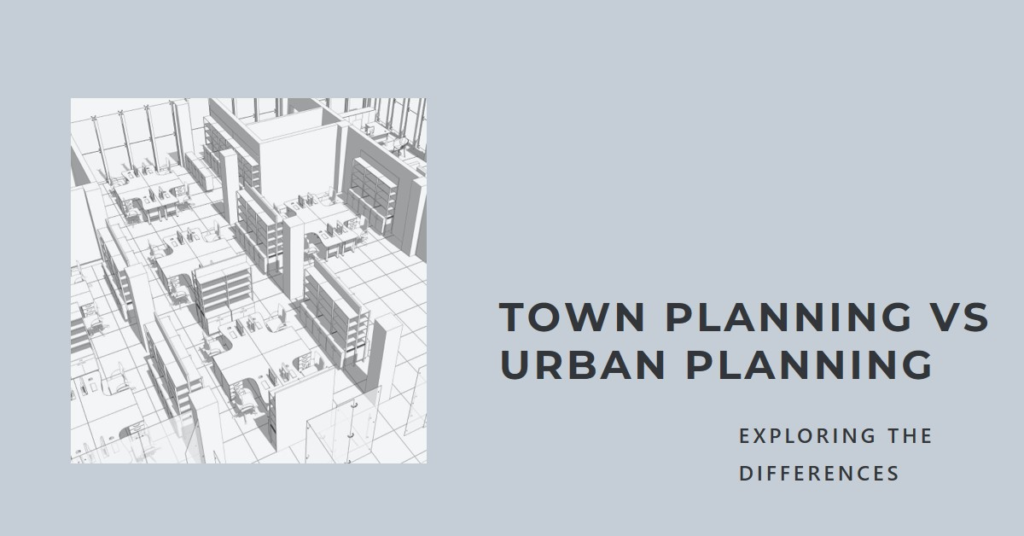
Table of Contents
- Introduction: Defining Town Planning
- Expanding Horizons: What is Urban Planning?
- Historical Context: Evolution of Planning Practices
- Scale and Scope: Comparing Dimensions
- Functional Focus: Tailoring to Community Needs
- Regulatory Frameworks: Navigating Planning Policies
- Economic Considerations: Driving Growth and Development
- Environmental Impact: Prioritizing Sustainability
- Technological Integration: Embracing Innovation
- Conclusion: Distinct Yet Interconnected Disciplines
Introduction: Defining Town Planning
Town planning, often referred to as urban planning in smaller contexts, is a process dedicated to the development and design of land use and the built environment in towns and small cities. This involves the organized and thoughtful arrangement of physical space to foster functional, economic, and sustainable environments. Planners focus on various elements, including residential areas, commercial spaces, public amenities, and transportation networks, ensuring that the layout is efficient and beneficial to the community.
In essence, town planning is about creating a blueprint for smaller urban areas, aiming to enhance the quality of life for residents. Planners must consider factors such as zoning laws, building regulations, and community needs, ensuring that growth is controlled and balanced. By doing so, they help towns evolve into more liveable, vibrant spaces that cater to the diverse needs of their populations.
Expanding Horizons: What is Urban Planning?
Urban planning encompasses a broader scope, dealing with larger cities and metropolitan areas. It involves the strategic development of extensive urban regions, addressing complex issues such as infrastructure, housing, economic development, and environmental sustainability. Urban planners must coordinate with various stakeholders, including government agencies, private developers, and the public, to create cohesive plans that foster sustainable growth and development.
Moreover, urban planning considers long-term implications and aims to create resilient cities that can adapt to future challenges. This includes managing urban sprawl, reducing traffic congestion, and ensuring equitable access to services and amenities. By integrating social, economic, and environmental considerations, urban planners strive to create urban environments that are not only functional but also sustainable and inclusive.
Historical Context: Evolution of Planning Practices
The roots of town planning can be traced back to ancient civilizations, where the organization of settlements was essential for defense, trade, and community living. Historical towns often grew organically, with planning practices evolving as societies became more complex. The Industrial Revolution marked a significant turning point, as rapid urbanization necessitated more structured approaches to town planning, addressing issues such as sanitation, housing, and transportation.
Urban planning, on the other hand, emerged as a distinct discipline in the late 19th and early 20th centuries, driven by the need to manage the growth of burgeoning cities. The challenges of industrialization, coupled with the rise of modernist planning principles, led to the development of comprehensive urban planning frameworks. These frameworks aimed to address the multifaceted needs of expanding urban populations, incorporating innovative design and infrastructure solutions.
Scale and Scope: Comparing Dimensions
One of the primary differences between town and urban planning lies in their scale and scope. Town planning typically focuses on smaller geographic areas with populations ranging from a few thousand to several hundred thousand residents. This allows planners to concentrate on local issues and tailor solutions to the specific needs and characteristics of the town.
Conversely, urban planning deals with larger, more complex metropolitan regions, often involving millions of residents and extensive geographic areas. This broader scope requires planners to address a wide array of issues, from regional transportation networks to large-scale housing developments and economic zones. The complexity of urban planning necessitates a more integrated and multidisciplinary approach, encompassing various aspects of social, economic, and environmental planning.
Functional Focus: Tailoring to Community Needs
Town planning often emphasizes creating a sense of community and fostering local identity. Planners prioritize the development of public spaces, parks, and community facilities that enhance social cohesion and promote a high quality of life. This localized focus allows for more personalized and context-specific solutions, ensuring that the unique character of each town is preserved and enhanced.
Urban planning, while still concerned with community needs, operates on a larger scale and must balance a multitude of interests and priorities. This includes managing economic growth, addressing social inequalities, and ensuring environmental sustainability. Urban planners must create strategies that accommodate diverse populations and complex urban systems, often requiring innovative solutions to address the challenges of large-scale urbanization.
Regulatory Frameworks: Navigating Planning Policies
Both town and urban planning operate within regulatory frameworks that guide development and land use. Town planning is often governed by local zoning laws, building codes, and municipal policies, providing a clear set of guidelines for planners to follow. These regulations ensure that development is controlled and aligns with the town’s long-term vision and goals.
Urban planning, however, involves navigating a more complex web of regulations and policies at multiple levels of government. This includes national, regional, and local planning frameworks, each with its own set of rules and requirements. Urban planners must coordinate with various agencies and stakeholders to ensure that their plans comply with all relevant regulations and contribute to the overall strategic objectives of the metropolitan region.


Economic Considerations: Driving Growth and Development
Economic factors play a crucial role in both town and urban planning. Town planning often focuses on attracting investment and promoting local economic development, creating opportunities for small businesses and entrepreneurs. Planners work to create vibrant commercial areas, support local industries, and enhance the overall economic vitality of the town.
Urban planning, on the other hand, must address the economic dynamics of larger metropolitan regions, including issues such as job creation, economic diversification, and regional competitiveness. This involves developing strategies to attract major investments, support large-scale infrastructure projects, and foster innovation and entrepreneurship. Urban planners must consider the economic interdependencies within the metropolitan area and create integrated plans that drive sustainable economic growth.
Environmental Impact: Prioritizing Sustainability
Sustainability is a key consideration in both town and urban planning, though the approaches may differ. Town planning often emphasizes preserving green spaces, promoting sustainable building practices, and enhancing local environmental quality. Planners may implement initiatives to reduce carbon footprints, promote renewable energy, and protect natural resources within the town.
Urban planning, given its larger scale, involves addressing more complex environmental challenges such as air and water quality, waste management, and climate resilience. Planners must develop comprehensive strategies to mitigate the environmental impact of urbanization, incorporating green infrastructure, sustainable transportation, and climate adaptation measures. The goal is to create urban environments that are not only liveable but also resilient to future environmental challenges.
Technological Integration: Embracing Innovation
Technological advancements are transforming both town and urban planning, enabling planners to create more efficient and effective plans. In town planning, technology can be used to enhance community engagement, streamline regulatory processes, and improve the delivery of public services. Planners can leverage Geographic Information Systems (GIS), digital mapping, and data analytics to make informed decisions and optimize land use.
Urban planning, with its larger scale and complexity, benefits from more advanced technological solutions. This includes smart city technologies, such as IoT sensors, data-driven urban management systems, and advanced transportation networks. Urban planners can use these technologies to enhance connectivity, improve public services, and create more sustainable and resilient urban environments. By embracing innovation, urban planners can address the challenges of rapid urbanization and create cities that are better equipped for the future.
Conclusion: Distinct Yet Interconnected Disciplines
In conclusion, while town planning and urban planning share many similarities, they are distinct disciplines with different scales, scopes, and focuses. Town planning is concerned with the development and organization of smaller urban areas, emphasizing community needs and local identity. Urban planning, on the other hand, deals with the complexities of large metropolitan regions, addressing a wide array of social, economic, and environmental challenges.
Despite these differences, both disciplines play a crucial role in shaping our built environments and enhancing the quality of life for residents. By understanding the unique characteristics of each, planners can create more effective and sustainable solutions that cater to the diverse needs of our urban and town communities.


